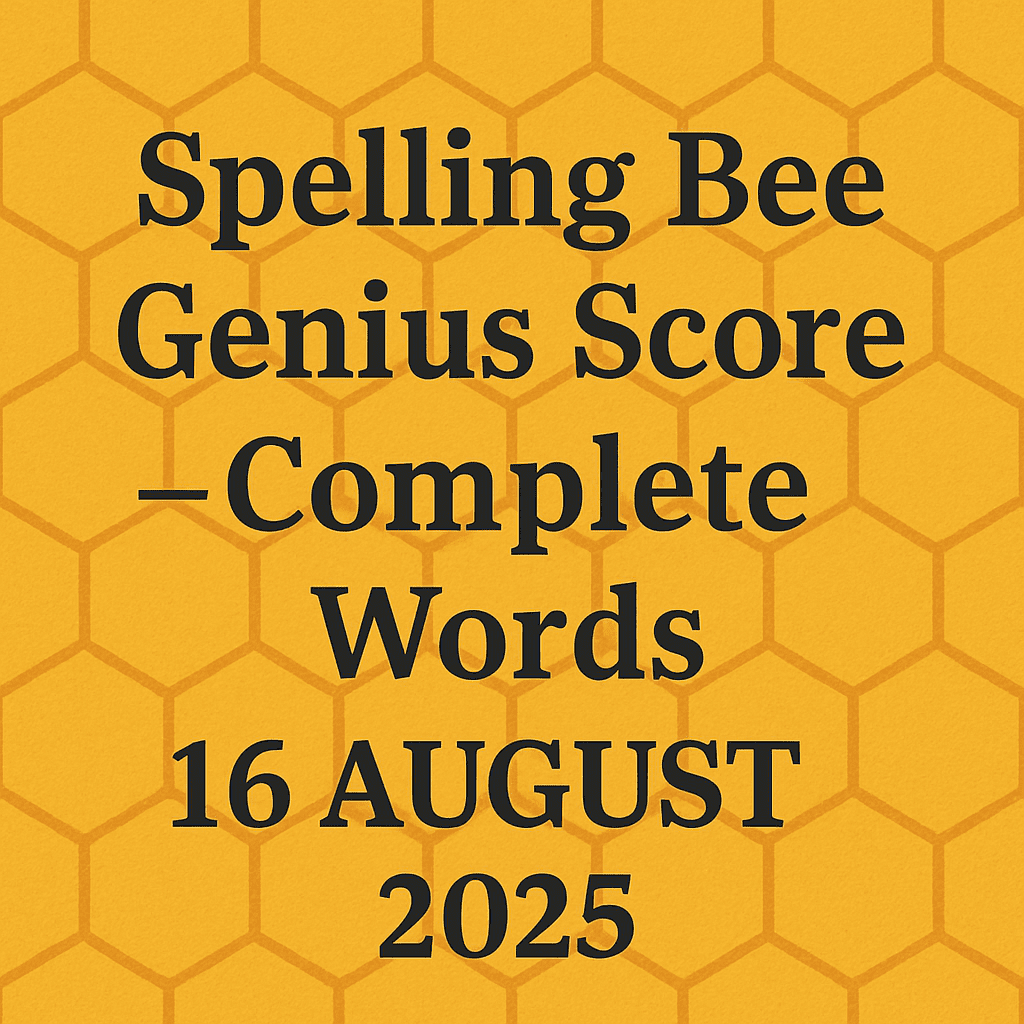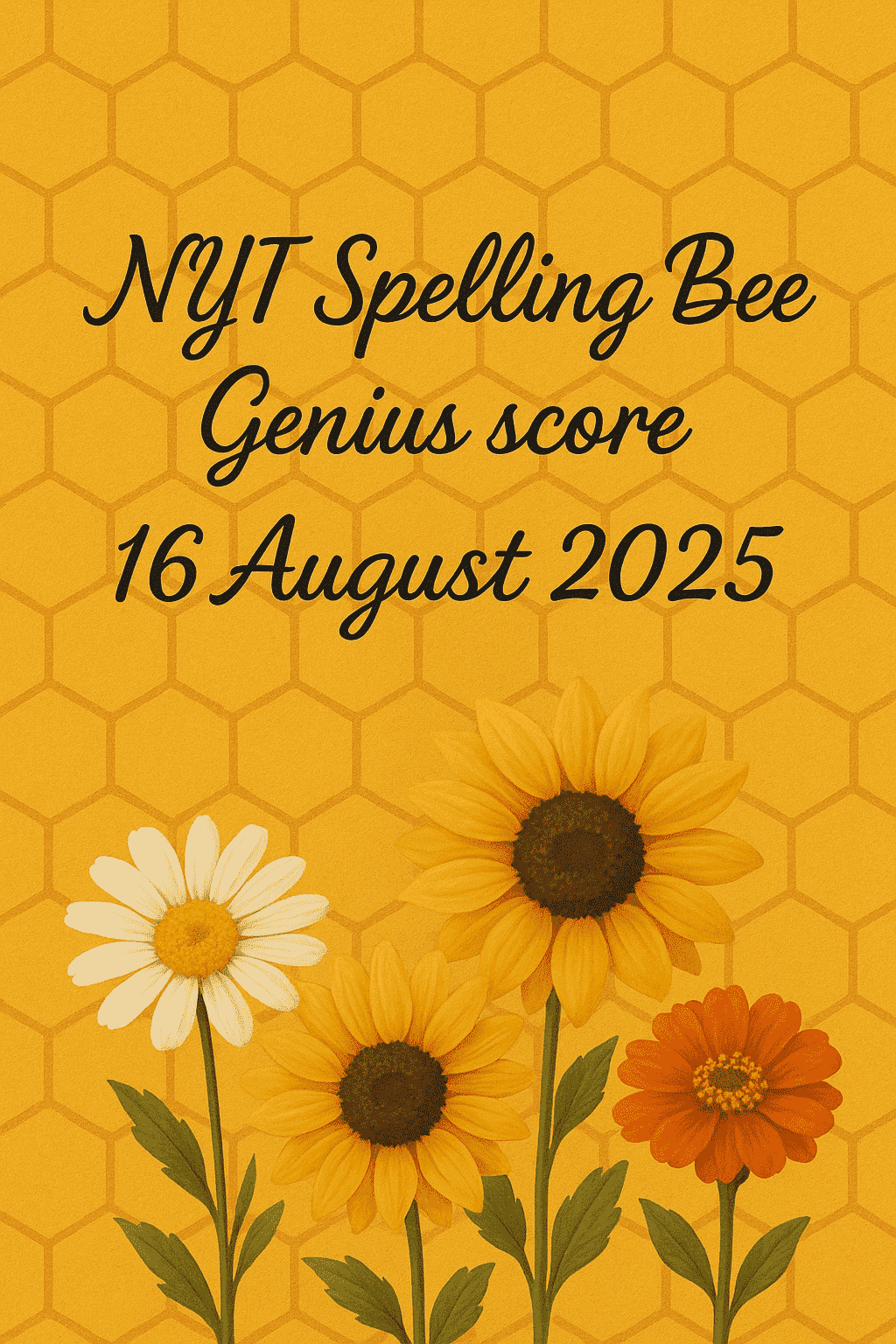Pangram: UNCARING
Today’s New York Times Spelling Bee puzzle placed R at the center of the hive, with the outer letters I, U, A, C, N, G. With this mix, I immediately sensed the potential for a strong pangram. After some careful searching and trial combinations, the pangram revealed itself: UNCARING
In this post, I’ll walk you through how I solved the puzzle, the strategies I used, and list out all the possible words I uncovered along the way.
How I cracked it
1) Scout the skeletons.
With R in the middle and a friendly mix of vowels (A, I, U) plus workhorse consonants (C, N, G), I first scanned for common clusters: GR-, CR-, -ING, -ARN, -UR-. When a hive has both -ING and multiple vowels, there’s usually at least one long, elegant anchor.
2) Grow the –ING spine.
I wrote quick stems that must include R: R-ING, -RING, GR-ING, CR-ING. That immediately surfaced medium words like RING, RUING, CURING, URGING, RACING, ARCING, NARCING (slang, but often accepted). Once the –ING vein was flowing, the full set U–N–C–A–R–I–N–G practically arranged itself into UNCARING.
3) Confirm the pangram.
I ticked off each letter: U, N, C, A, R, I, G—all used, center letter present, no outside letters, length ≥ 7. Locked.
4) Rake the grid by families.
From the pangram, I fanned out to word families:
-
CR/GR starts: cairn, caring, curing, grani-, grain, graining, grr…
-
UR-/-UR- forms: uric, ruin, ruing, incur, incurring, uranic
-
-ING endings: racing, arcing, curing, urging, graining, craning, narcing
-
Indo-Aryan roots/common nouns likely to be accepted: rani, ruana, guarana, gaur
5) Final sweep.
I did an alphabetical starter pass (beginning each test with A/C/G/I/N/U + R) to catch stragglers like ingrain, runic, and cairn.
Pangram

Common pangrams in NYT Spelling Bee puzzles (Full word list I found)
(The NYT acceptance list can differ; I’m listing clean candidates made only from the hive letters and including the mandatory R.)
4 letters
- rang
- rani
- rain
- ring
- rung
- ruin
- gaur
- gran
5 letters
- grain
- cairn
- incur
- ricin
- ruing
- runic
- unrig
- ruana (poncho)
- garni (culinary)
- guar
6 letters
- caring
- arcing
- caring
- craning
- curing
- racing
- raining
- urging
- uranic
7+ letters
- uncaring (pangram)
- accruing
- agrarian
- ingrain
- craning
- arguing
- incurring
- graining
- arranging
- auguring
- arraigning
- cringing
- guarana (common noun, the plant/seed)
- garaging
- ingraining
- unrigging
High-confidence keepers for score-chasing: cairn, grain, incur, runic, ruing, arcing, caring, curing, racing, urging, uric, ruin, rani, rung, ring, rain, rang, gaur, guarana, ingrain, graining, craning, incurring.
Why UNCARING pops out
-
The hive invites -ING building; adding U and C around -R-ING yields many hits (CURING, ARCING, URGING).
-
Swapping the –ING spine to UN- + -CARING gives UN-CARING, a natural English construct.
-
All seven letters are distinctive enough that you rarely drift into illegal letters (no E/O/S/Y traps today).

Quick strategy you can copy next time
-
Write “must-use R” stems on paper: R–, –R–, –ING with R.
-
Explode the –ING seam first; it’s the richest vein with these letters.
-
Test UN- and IN- prefixes across CARING / GRAIN / CURING families.
-
Sweep for proper/common nouns often allowed: rani, ruana, guarana, gaur.
-
Alphabetic starter pass (A/C/G/I/N/U + R) to close gaps.
A Look Back at the Challenge
Today’s hive was a satisfying mix of straightforward and challenging finds. The pangram UNCARING stood out as the perfect anchor word—it’s simple, meaningful, and once discovered, it unlocked a whole family of related words like CURING, URGING, CRANING, and INGRAIN. That moment of spotting the pangram really shifts the game from scattered guessing to focused word-building.
What made this puzzle enjoyable was the balance: familiar entries such as RAIN, RUNG, GRAIN, RANI blended seamlessly with trickier terms like RUANA, RUNIC, and URANIC. It’s a reminder that Spelling Bee rewards both quick pattern recognition and a willingness to explore less common vocabulary.
If you’re aiming for Queen Bee, the strategy here is clear—lean into -ING endings, test UN-/IN- prefixes, and sweep systematically for hidden gems. With persistence, today’s puzzle showed how a single pangram can transform the entire solving experience.






